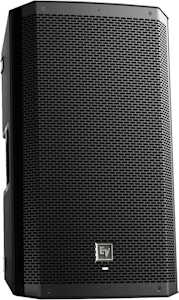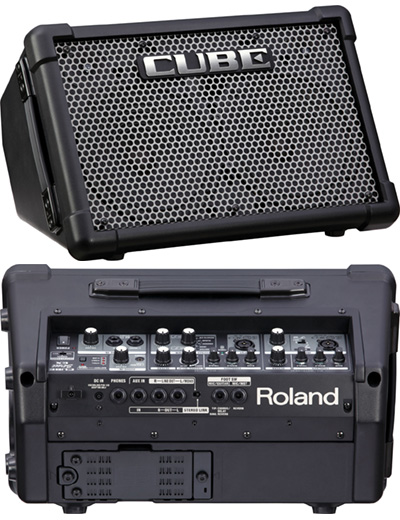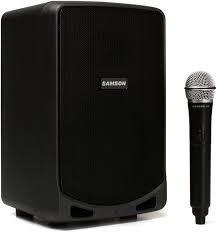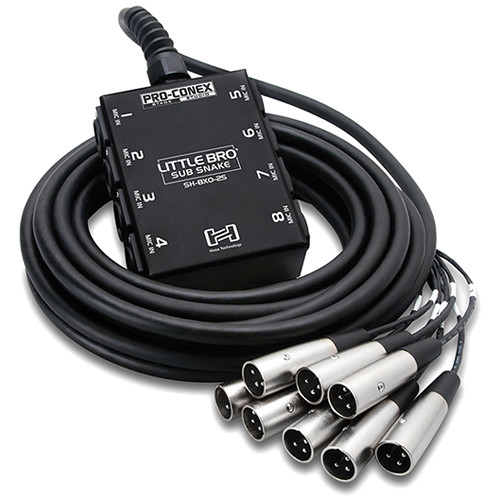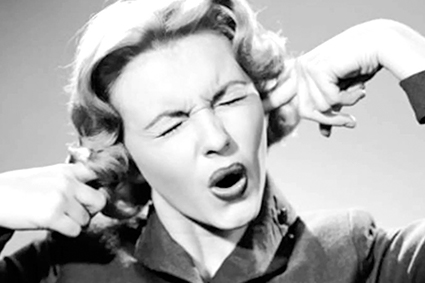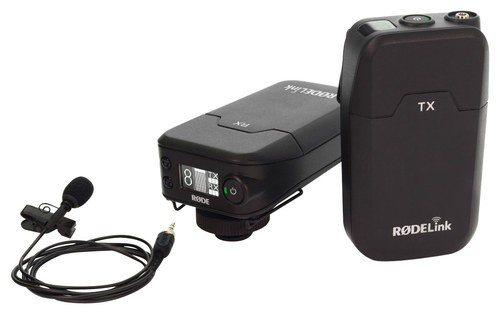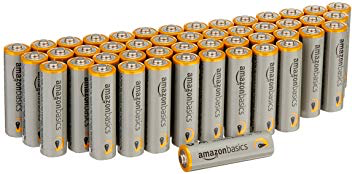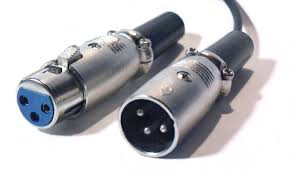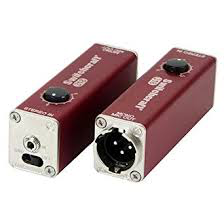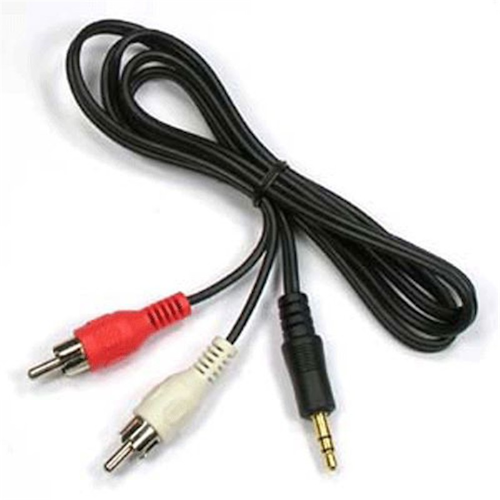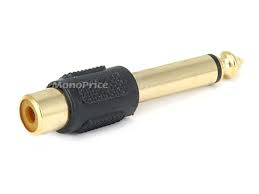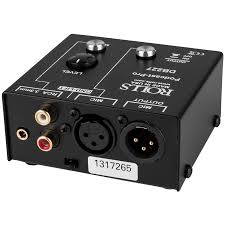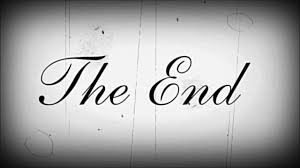

Sound Systems for Magicians 2023
By David Reed-Brown
Welcome to the wonderful world of sound systems for magicians.
When audio doesn’t work well in a show for me, it’s my nightmare! Audiences, in fact, will forgive many things, but not poor audio, whether it’s live or online. Unless you are a silent act, what is the point of all your preparation if they cannot hear you? Good audio can make magical performances by 2 or even 3
times more effective. I hope this article will help you prevent those situations.
This is an overview of sound systems for the one or two person magic, music or variety act. I
will address the benefits of using just your voice, Bluetooth speakers for small groups, small
speakers to amplify your voice for 200+ people, the new Bose S1 type busking battery powered
speakers, and larger systems to bring both voice and music to hundreds or a thousand plus
people.
Along the way we will define terms; discuss when it’s appropriate to use a sound technician;
suggest particular equipment; consider how to connect things together and offer some tips. This
article is by no means a review of the whole market, and it assumes you have little audio
knowledge. To make this easy to use, each paragraph has a heading in bold capital letters,
often with a corresponding graphic. Salient points, products and pro tips are in bold. While I
tend to recommend pricier models for their quality sound and reliability, I will share some great
values too! As a bonus I will explain how I pack a 90 minute stand-up show with electronics
when I fly.
Finally, please keep in mind that there are many different ways to produce quality audio. People
have many opinions. Keep in mind what kind of problem we are trying to solve in each section –
what questions we re trying to answer.
LET’S ACKNOWLEDGE THIS:
There are times when it is perfectly appropriate to use just
your voice for a show. There’s something charming about events for smaller groups. You can
add sound with a triangle, a Tibetan prayer bowl, a drum, a music box or other instruments. For many audiences up to 50 people I don’t use a microphone. (But, I usually do when I perform for
the elderly so they can hear or more than 25 children to help maintain control.) The human voice
is magical, so I believe it’s worth learning vocal technique. Using vocal warm-ups, joining a
choir or investing in private voice lessons will teach you how to relax, annunciate, focus, breathe
and project, and you will sound better when amplified. I have a classically trained voice and can
speak effectively without a microphone to more than a hundred people if I need to. Then there
was “The Incident of 2011,” when I arrived to a middle school show for 900 students, and my
beautiful sound system went kaput. Surprisingly, because I had a trained voice, I was able to
project my voice and command the room. It hurt a little, and I was hoarse the next day, but it
worked.
The voice saved the day.



BLUETOOTH SPEAKERS:
These are all the rage. You probably have one. Bluetooth speakers are perfect for performing in a home or even a small conference room. You need to remember to charge the battery. They come in many shapes and sizes. BUT A WARNING: Bluetooth can fail you. While versions 4.0 to 5.0+ are much better, generally, for professional situations in larger venues, it is not as reliable. Connecting music to a speaker
with a wire is reliable. It just works. I used to NOT rely on Bluetooth for anything larger than a
home show or an informal show. Now I will do it for smaller venues and audiences up to 100 as
long as the Bluetooth devices re close together. The little Anker Speakers (about $35
Amazon.com for a 12 volt) is one of the best sounding speaker of its size. For bigger sound,
Anker has the Sound Core Boom Plus boom box with a built in handle and shoulder strap. It
charges quicker by USB-C (as many do) and gets loud enough to cover 100 people indoors and a
midsize group outdoors. It’s tough as nails and sounds great even at its loudest volume. Best of
al they are $120 or less on sale. The Ultimate Ears (UE) Boom and Mega-Boom speakers are
very good and very loud – 90 decibels. That’s enough for 50 people indoors. Multiple
manufacturers, including UE, have “party boxes” that get extremely loud – up and over 125 db.
They sound great and hold a Bluetooth signal well. Another loud, reliable, waterproof boombox
with a shoulder strap is the $300 JBL Xtreme. PC Magazine gave it their Editors Choice
award. The Marshall Kilburn Portable Bluetooth Speaker has the classic Marshall
Rock-n-Roll look. It puts out a lot of sound, has a handy leather carrying strap, and battery life is
decent, but make sure you get a recent model as the batteries are better. Jeff McBride likes his a
lot. I’m sure many other Bluetooth speakers will work fine. (There are over 7,000 on Amazon.)
I trust these.
GET YOUR OWN SOUND SYSTEM:
It gives you peace of mind. If you primarily perform locally, having your own system is a good thing. When you bring it, your setup will be the same every time, and you won’t have an unknown and stressful learning curve when you arrive.
MIXERS & AMPLIFIERS:
Briefly, a sound mixer takes audio signals from multiple devices and (generally) merges them into one signal. Often, for each device you can control the volume, EQ low-mid-high levels, and sometimes reverb and other effects. Some mixers are basic, with just 2-4 inputs. Many active speakers and most portable PA have a built-in mixer. Professional mixers can have 40+ inputs. Today, you have a choice of digital and analog mixers. Digital ones can be smaller, often with motorized sliders that can be programmed. They can also be plugged into a computer for live broadcasts or recording – very handy!
A mixer then sends it’s merged signal to an AMPLIFIER, which increases its volume and sends it to the speakers. For our purposes, better amplifiers are CLASS D. Class D amplifiers are lighter and allow battery powered PA systems to play for a very long time. Also, some compact units combine a mixer and amplifier in one rectangular housing. (Yamaha, Mackie, Peavey)
ACTIVE VS. PASSIVE SPEAKERS:
Active speakers are extremely useful. They have an amplifier built into the speaker housing. Microphones and music players are plugged directly into the back. Along with volume control, they may or may not have multiple inputs. An active speaker with a small mixer and wireless microphone is an affordable way to assemble a sound system. (See “An Affordable Option” below) Sometimes you can connect two active speakers together, or one active speaker will drive a passive COMPANION SPEAKER. On the other hand, PASSIVE SPEAKERS usually use no power and have no built in amplifier, so they must be connected to one. They are lighter. PRO TIP: An active speaker can be used as a main speaker for a show, or you can use it on stage pointed back at yourself as a monitor. With your smartphone and a Y cable, you can use one at a party as the world’s best boombox. I use a small one for small venues. It saves me from lugging my larger system.
Even a quality used one will do.
The Anchor Audio AN-135 Portable PA With Wireless Headset Mic
PORTABLE PA:
These all-in-one audio systems are excellent for one and two person acts because they are compact, set up quickly and are easy to use. Some have little more than an on-off switch and volume control. That’s easy! It helps keep sound simple with fewer wires and fewer things to go wrong. A portable PA has everything in one speaker housing. It is an active speaker with multiple inputs on the back set up like a mixer and possibly one to four wireless microphone receivers built in to the housing. Some even have a rechargeable battery, so you can be totally wireless. Their simplicity and fast setup let you concentrate on performing. All you do is put the PA on a speaker stand, table or chair. Then you just switch it on, turn on the 3microphone and test the volume. Voila! You’re in business!
I strongly recommend that magicians, small music and variety acts seriously consider a portable PA as their first system. Many of these have optional passive companion speakers for large audiences.
PRO TIP:
When using a client’s sound system, it’s nice to have an emergency backup PA in the car – even a cheap Pyle Pro 400W. Then if something goes wrong, you have a solution!
The two-speaker Yamaha Stagepas 400BT is an excellent VALUE.
ONE OR TWO SPEAKERS?
For larger audiences, you really need two speakers to spread the sound across a wide area. Sometimes you see a single-speaker portable pa advertising that it can reach over 1,000 people, but that’s 1,000 people sitting in a narrow column directly in front of you. You will rest easy knowing you have a two speaker option, even if you use only one speaker most of the time.
HOW LOUD IS IT?
The only way to measure the loudness of a sound system is by using a sound meter at a distance of one meter directly in front of the speaker. Loudness is measured in decibels. (db) Therefore, do not judge loudness based on watts. Good sound systems will list loudness in decibels in the specifications. To cover hundreds of people, I recommend a two-speaker system of at least 125 db.
The Sound Projections Voice Machine With Wireless Receivers
SMALLER PORTABLE PA FOR VOICE:
If you primarily amplify voice, a quality system driving a 4 to 6 inch speaker can actually cover hundreds of people – especially if you have two of them or a companion speaker. They can also play music in a pinch. I think everyone should own a small system for performing in homes and for small groups. It makes life easier.
See the Anchor Audio AN-130 and AN-1000 and other active speakers like the Behringer Eurolive or Mackie SRM 150. Honestly the Anchors are the loudest and best sounding small speakers I have encountered in the last twenty years. They are lunchbox size and come with optional wireless mics. Get a matching soft case if you can. Anchor’s sound and build quality is through the roof. They are used in trade shows, schools, auctions, military and government. You can often find them on ebay for $50 (a no-brainer) or $250+ for those with the built-in wireless mic.
On the high end, the Sound Projections Voice Machine may be all you will need. EVER. It’s compact, tough as a tank and VERY loud at up to 127 decibels. It has a lightweight lithium rechargeable battery, and built-in wireless mics are optional.
AMAZING NEW MIDSIZE PORTABLE BATTERY POWERED BUSKING SPEAKERS.
In recent years, a new category of portable pa has emerged with the invention of the Bose S1 Pro ($500), and now the Bose S1 Pro+. ($700) These have a battery, mixer, Bluetooth, and extremely high quality sound of sufficient volume for fairly large crowds indoors and out. What is amazing about these is not only the price, but the weight. They are all around 15 lbs.! These mount on speaker poles; have optional carry cases (The Bose is a slick backpack!); reliable Bluetooth connections, and – in the case of the Bose S1 Pro Plus – built in wireless receivers with optional transmitters. That sold me on it, and I own one. It’s amazing. There are two kinds of transmitters: an xlr that goes on the end of a hand-held microphone and another for an instrument, like a guitar or keyboard. These small battery-powered transmitters are stored in special receptacles in the speaker WHERE THEY CHARGE and are ready for you next time.
ElectroVoice Everse8 is very similar but TWICE AS LOUD at around 127db. That can do 200 people indoors if the angle of coverage is good. It has an optional shelf for strapping a wireless microphone receiver on top. Almost all of these have USB ports on the back for charging your phone – or better – powering your wireless microphone. Other models include the Mackie Thump Go ($400) and JBL EON One ($500) are similar, but the first two sound better and offer more convenience. I highly recommend these for magicians because they are a great way to get quality, convenient sound in a lightweight package.
The Anchor Audio Liberty is very powerful and rock solid.
LARGER PORTABLE PA FOR MUSIC:
If you really want your audience to experience the full spectrum of your music – possibly to feel its thump in their chests – then you need at least a 10 or 12 inch two-way speaker. (Meaning it has a smaller tweeter and larger woofer.) An excellent 10 inch system is a nice compromise between sound quality, size and weight. Two nice entry level two-speaker PA systems are the Yamaha STAGEPAS 400 & 600. They have a removable mixer that stores in the back of one of the speakers, and there’s an optional 18” subwoofer to really fill out the sound. A BONUS: These systems also have feedback suppression circuits that you can turn on and off. A number of people associated with the Magic & Mystery School speak highly of these. You will need to add a wireless mic. Also, consider the matching soft rolling case. Now, some people like the Fender Passport systems, but quality has been an issue in the past. Taking a couple steps up, the Anchor Audio Go Getter is very good. I mention the line-array Bose L1 in more detail below. It’s a subwoofer and tower of narrow speakers that rolls in one compact unit. What’s interesting is that you can purchase a Bose L1 Compact for under $850. Bose says it will cover up to 100 people. Get two! There are smaller and larger Bose line array systems with optional batteries and base units.
PRO-TIP A BEGINNER’S TRICK FOR SETUP:
If all the cords and connectors of a sound system scare you, get a few rolls of masking tape in different colors. Wrap the ends of your cords – each in a different color – and put a matching piece of tape by the mixer input they use. It requires less thought. “The green cord goes in the green hole…” Also, cover unused inputs with black electrical or gaffers tape. (Never duct!)
You’ll make fewer mistakes.
The Bose L1 Model II System with Double B2 Bass & A1 Pack Lite Power Amplifier
HIGH END LARGE PORTABLE PA:
If you demand the best in durability, options and sound quality, consider the Sound Projections Sound Machine and the Anchor Audio Liberty. I used a larger Sound Projections system for many great years. (TRIVIA: The owner of Sound Projections designed the original Anchor Liberty.) Each of these come with optional passive speakers, optional batteries, built in wireless mic receivers and other features. Their manufacturers say these systems can reach over 1,500 people – with companion speakers. Then – taking a significant step up – there are LINE ARRAY systems, which stack narrow speakers in a tower and have subwoofers. They sound amazing, roll in one self-contained unit and set up fast.
The Anchor Audio Beacon 2 is excellent. Anchor says it covers up to 2,500 people; can include wireless receivers and be run on lithium battery. If money is no object, consider getting a larger Bose L1 or massive Bose F1 line array system with a single or double bass option. Magically, these can be placed behind you on stage without causing feedback. There are a few different systems, so read their descriptions carefully. In short, the Bose L1 1S can cover up to 300 people, and the L1 Series II covers up to 500. To splurge put one on the left side. Then get a second one for the right. There’s a battery option for certain setups. What’s amazing is that the small speakers in the Bose L1 towers point in different directions creating an almost magical sound that seems to spread evenly throughout the room. Even people down front won’t get blown away, which can happen with standard two-way (woofer-tweeter) PA systems. I once performed at an event with two larger Bose L1 systems. Each tower had the double bass option.
The audience marveled at them. NOTE: These Bose systems do not come with built in wireless microphone receivers. A number of Magic & Mystery School people like the L1.
The Electro Voice ZLX-12BT 12 in. The QSC K10-2 has an excellent selection of inputs.
LARGE ACTIVE SPEAKERS SAVE $$$.
It’s possible to save money creating an excellent system with one or two active speakers in 10, 12 or 15 inch size. But remember, larger means heavier. Some brands like Behringer and Mackie cost less. The quality isn’t high end, but they are decent, and you get a lot of bang for your buck. You will need to add your own wireless microphones and perhaps a small active or passive mixer. There will be more wires to connect.
Electro Voice (EV) makes excellent active speakers, offering great bang and build quality for your buck. And the sublime QSC K10-2 and K12-2 pack incredible quality, bass and power for their size. All of these brands have matching subwoofers. The QSC lower end subwoofers are rather portable medium size and use special electronics to match the main unit. JBL systems tend to be more lightweight. That can affect sound quality a bit, but maybe lighter is literally what the doctor ordered. I have the QSC K-10 and have never brought the volume above 60%. QSC durability is so good that they are often used as rentals. You can also find great active speakers from Yamaha and Mackie.
HOW HEAVY IS IT?
Eugene Burger was fond of saying, “Everything weighs something…”
Think twice about carrying a portable PA or active speaker over 40 lbs. Many are 30 lbs. or less. Systems with 6 or 8 inch speakers are even lighter. JBL’s are lighter along with the Bose S1 Pro+ category. If you must have battery power, consider systems with lighter lithium ion batteries instead of the heavier lead acid. BUT NOTE: If you have lead acid, it’s OK to leave it constantly plugged in so it’s always ready.
The Roland Cube Street EX
BUSKING WITH BATTERIES:
For busking, you generally need to amplify your voice with something durable, portable and battery powered. Before the Bose S1 Pro genre, the Roland CUBE systems were and still are popular with many buskers. Check out the Cube Street EX.
The Samson XP 106 – Entry Level Portable PA Battery, Wireless, Up to 100 People
ABOUT THE HAPPIE AMP:
Many people like the Amazing Amp (was the Happie Amp) by Empower Sound. It has its affordable place, but the quality is mediocre, and I don’t recommend it. The Anchor Audio AN-130/135/1000 units are so much better. (See ebay) However, if you must have a small, affordable, battery powered portable PA with a built in wireless microphone, consider the SAMSON XP 106 and XP 108 systems at places like www.bhphotovideo.com. The XP106 can reach up to 100 people; the 108 will do more. The Behringer Europort is good too.
The Shure SM58 microphone is the durable industry standard at $100.
The budget SM48 is almost as good (boost the high frequencies) and just as durable for around $40.
AN AFFORDABLE BEGINNING:
Getting started does not need to cost a lot. Buy a good handheld mic, like a used Shure SM58 on ebay. ($30) They’re very solid. Get a 20 ft. mic cord and a stand. Then add a vocal PA, like a used Anchor AN-130. This is an affordable way to get your show on the road. People will comment how amazing this small setup sounds. It’s uber reliable, tough, reaches up to 200 people and can cost under $200. Practice using a mic on a stand. It’s an essential skill. Problem solved! Now get out there!
WHAT IF I JUST CAN’T BRING MY OWN?
If you travel by air or can’t bring a system, make sure you negotiate one into your contract and whether or not there will be a sound technician. Talk to someone very familiar with the audio system they provide to let them know your specific needs. (HINT: It’s usually not the booker.) Make sure you understand EXACTLY what connectors you will need to plug your equipment into their system. Have someone text you pictures of the system, especially the inputs. See “Connectors” below.
SPEAKER PLACEMENT:
To avoid feedback, it is usually best to place the speakers just in FRONT of your performing area and to either side. If they are behind or beside you, your microphone will pick up the speaker output and create feedback. ALWAYS perform a sound check before the show by wearing your microphone and walking around the venue speaking as you would during your show. And don’t forget to test the music too. To avoid feedback, beware of walking directly in front of your speakers with the mic on. If you cannot help it, mute your mic as you walk past. This is when it’s handy to have a technician running sound for you, so you can focus on performing. When testing, PLEASE NEVER TAP OR BLOW INTO A MICROPHONE. You can damage it. Simply speak or sing.
WHEN DO I NEED AN AUDIO TECHNICIAN?
It can get tricky controlling sound for audiences larger than 250. (and sometimes fewer) You simply do not hear on stage what the audience hears in the house. So, rather than stopping the performance to run back and forth to the controls – or worse having levels too soft or too loud for the whole show – it’s best to have an experienced technician manage sound for you. Have a TECH REHEARSAL with them before the show.
A Basic 50 Foot Snake by Hosa
TECHNICIAN PLACEMENT:
When using a sound technician, ideally they should staff a mixer board from the center, in the middle or the back of the house. That way they hear what the audience hears. In these settings, one often uses a “SNAKE.” This has a box of inputs at one end, with a long thick cable going 100 ft for example, and a bunch of plugs coming out the other end. These plug into the mixer. In professional theaters, there might be inputs built into the stage or in the wings with cable running out of sight – perhaps to a sound booth.
FEEDBACK SOLUTIONS:
Feedback can be tricky. Often a microphone level is too high, or the main volume is too high, or the speakers are not angled correctly or set far enough forward.
If you get a mid-range ringing feedback (not the super high squeal), turn down the middle frequencies. On a good sound system, you will see equalizer (EQ) controls for low, middle and high frequencies. If you are in a gymnasium – the worst feedback offender – point the speakers toward the floor, lower the mids and highs, and raise the base. If you encounter feedback often, consider getting a portable pa with feedback suppression built in. It’s included with some Yamaha and Behringer systems. Separate feedback suppression units are available. When they are turned on, sound quality goes down a bit. C’est la vie.
The Rode RodeLink Filmmaker Kit can still be found.
I have this light, compact, battery-powered wireless system. I love it.
A MIC FOR TRAVEL:
It is a good idea to have your own compact wireless mic for traveling light, like the Rode RodeLink MovieMaker, Sennheiser EW100 G4 or Shure BLX or PGXD.
These are compact and light enough to carry on a plane. The Sennheiser G4 systems are excellent and made of metal. For more detail, I have an article, “Microphones for Magicians” on The Secret Art Journal.
A SMALL GEAR BAG:
To keep order, I use a small soft-sided handheld microphone bag to hold my wireless mic, shorter wires, Y-cable, batteries, adapters, small roll of gaffers tape, etc.
The Aurray WMC-100 Wide Mouth Case is a good example.
ALWAYS HAVE LOTS OF EXTRA BATTERIES, and throw dead batteries away so you don’t use them by mistake, like 2 minutes before you’re introduced!
PRO TIP: Avoid using rechargeable batteries because they hold a charge for shorter and shorter periods over time. Standard alkaline are affordable in bulk. If it really counts, use lithium AA’s. Some professionals insist on using fresh batteries for every show. Please recycle.
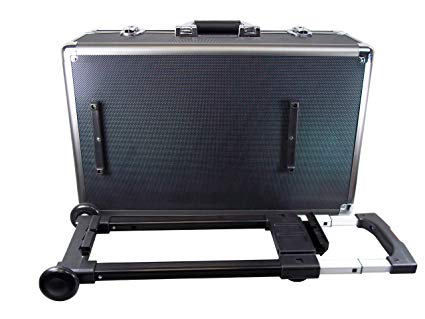
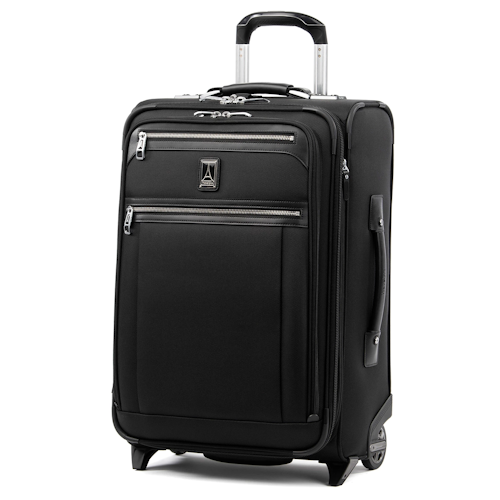
Carry-Ons for Air Travel
Ape Case ACHC 5650 With Removable Wheels & Travel pro Platinum Rollaboard Carry-on
AN ASIDE – MY SHOW FLYING STRATEGY:
I can fly a one hour stand-up show most anywhere in the world. Airlines lose luggage. We tell horror stories and address this issue frequently at the Magic & Mystery School. I prepare for the worst by packing my microphone, music control, close-up magic and a the lightweight Instand CR3 table in a larger Swiss Gear backpack. I carry this on the plane and wear clothes I can perform in. I also carry-on most of my show in a like the hard sided Ape Case ACHC5650 or the soft sided Travelpro Platinum Magna (Elite) Rollaboard Carry-On with full lifetime warranty including airline damage.
Two wheel suitcases are better for traveling by car, train, taxi and handle curbs and stairs better. (I always carry-on my linking rings because they are a large featured routine that can act as a closer.) I check two suitcases: a 22 inch one with my clothes and a 25 inch one with my floating table – packed in its light hard-sided aluminum case – and other stage show essentials. I also like smooth-rolling spinner suitcases like the durable but cheaper TravelPro Crew 11.
HINT: Costco has a Travelpro Platinum look-a-like for $100. Also, some people prefer the protection of hard sided luggage.
INSIDER SECRET: Checked spinner bags are damaged less because handlers just roll them to one another, instead of throwing.
CONNECTORS IN BRIEF:
To be prepared for 95% of situations, make sure you can plug
your music into RCA stereo inputs with a Y cable (20 ft long if possible), into ¼” TS phono input using RCA adapters, or into an XLR microphone input using a DI Box. See below.
An XLR cable can send an audio signal over 100 feet.
WHAT IS XLR?
This standard XLR microphone connector has three prongs or holes arranged in a triangular pattern. The signal is low impedance, so it can be sent well over 100 feet without distorting. Compare that to a high impedance preamp signal coming out of a smartphone, tablet, laptop or CD player, which will distort after only twenty feet.
The passive Switchcraft 318 Mini Direct Box requires no power.
WHAT’S A DI BOX?
These are very useful. They let you plug a music player like an iPhone into an XLR microphone input. A Direct Input or DI Box converts a high impedance preamp signal – like the one coming out of an iPhone, tablet, laptop or CD player – and converts it to a low impedance signal. In other words, in larger venues it lets you send your music signal over a hundred feet through an XLR cable. DI Boxes are small and usually have ⅛”, ¼” and or RCA stereo inputs at one end and an XLR output at the other end. Sweetwater sells the Switchcraft 318 Mini Direct Box for $60. It is “passive,” so it requires no power. Sweet!
Y Cable – 3.5 mm (⅛ inch) male stereo to male RCA red and white
You can buy one at CVS in a pinch.
Y CABLE:
These are extremely useful for plugging a phone, tablet or laptop into a sound system. They have an ⅛” stereo male plug on one end and a pair of red and white RCA stereo plugs on the other. PRO TIP: You can buy them at drug stores in the electronics section. Many years ago I had two compact, high-quality, twenty-foot Y cables custom made by Microphone Madness.
They continue to serve me well.
RCA PLUGS:
The male end of an RCA plug is about ¼” in diameter. It has a metal ring around the outside and a single prong on the inside. The female RCA input looks kind of like an eraser head with a hole in the middle. On mixer boards you will often find female RCA inputs labeled “CD in” or “AUX in” near the lower right or upper right corner.
RCA to ¼” TS Mono Adapter
RCA TO ¼” PLUG CONVERTER:
Get a pair of these affordable converters for when you need to connect your music-playing device to a sound system with ¼” round TS inputs. (Guitars, keyboards and some microphones connect to mixers this way.)
The Rolls Podcast Pro DB227 Passive Mixer
PASSIVE MIXER:
These tiny mixers are called “passive” because they require no power. Some are no bigger than 2 decks of cards. Use a passive mixer to combine multiple audio sources, like when you use an active speaker with few inputs. See www.bhphotovideo.com
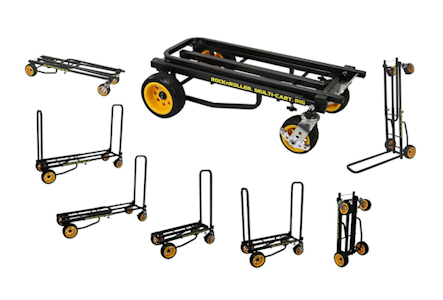
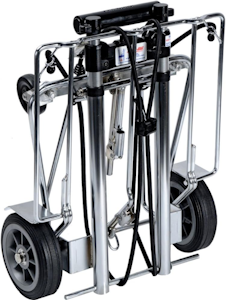
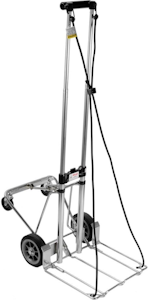
The Rock-N-Roller R16RT 8-in-1 Multicart Remkin Tricart 800 & 600
MULTI-CART:
I do pack lighter these days, but sometimes I still use a Rock-N-Roller. My “go to” cart is now the Remkin Multicart 800. (Also see smaller versions.) It folds down to 20 inches high and can travel on the passenger seat floor of my car. To carry larger gear, a folding cart is an extremely helpful tool. It is very impressive to roll into a venue with everything you need on one cart. These come in different models and sizes and are worth it!
That’s all folks!
We’ve come to the end of our journey through the world of sound systems. I hope it was a good way to get the lay of the land. Thanks for reading. Hopefully these things will help you perform better shows with fine, seamless audio experiences for your audiences.
NOTE: For detailed information about microphones and remote music control systems, see my articles on The Secret Art Journal.
© 2018, 2019, 2023 by David Reed-Brown. All rights reserved.














